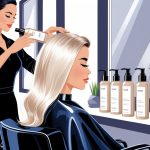Skincare Ingredient Swaps Instantly Calming Redness the Moment You Try Them
Finding the Right Moisturiser for Redness
You’d think it’d be easy but nope, there are like 500 options and half say “for sensitive skin” even though one turned me bright red. Trial and error is my only plan—plus I never remember what worked last time anyway. Dermatologists keep saying niacinamide, which I confuse with niacin, like my skin cares.
Sensitive and dry doesn’t mean thicker is always better. Oil-free gels, chunky creams, milky lotions—they all crowd my counter. I swap them out every few days. “Natural” doesn’t mean safe—one had ten plant extracts and I turned polka dot. Check for ceramides, glycerin, aloe, panthenol. Ignore the glow promises.
Comparison Table:
| Ingredient | What It Does | Skin Type | Examples |
|---|---|---|---|
| Ceramides | Barrier repair | Dry, damaged | CeraVe, Vanicream |
| Glycerin | Hydrates | Any, esp. dry | Skinfix, Neutrogena |
| Panthenol | Calms, hydrates | Sensitive, irritated | Eucerin, La Roche-Posay |
| Aloe Vera | Soothes | Red, hot, reactive | Aloe gels, Face Shop |
| Cucumber | Cools, mild redness | All types | Hydrating gels, toners |
I never finish a whole jar before my skin changes its mind, but at least these don’t scream at me. If only I could pronounce the old green bottle, maybe I’d finally stick to something.
Swapping Out Triggers: Avoid These in Your Routine
Honestly, I wish I could just toss half my cabinet and never get red patches again. Some stuff just sets me off instantly—like, I’ll use a new serum or pick the “wrong” toner and boom, flare-up, always before I have to see people.
Exfoliating Acids and Over-exfoliation
So, you got glycolic acid or salicylic acid? Love them for oily skin, but next thing I know, I’m patchy and peeling like a sunburn gone wrong. Over-exfoliation is, like, the sneaky villain nobody warns you about. Brands say “daily use!” but honestly, unless you want your face to feel like sandpaper, don’t.
AHAs, BHAs, lactic, mandelic—there’s a whole alphabet and I’ve tried most. Using more than one or layering them is where my skin just taps out. If I’m trying to chill out redness, acid-layering is out. I just swap for a milk cleanser or a boring balm. Here’s what I try to remember:
| Ingredient | What It Does | Swap For |
|---|---|---|
| Glycolic Acid | Strongest AHA | PH-balanced toner |
| Salicylic Acid | Deep pore cleanse | Clay mask (weekly) |
I once used a peel pad and watched a movie—couldn’t move my forehead after. Not recommended.
Retinol and Vitamin A Cautions
Retinol. Just saying it makes me think of flaking. Vitamin A stuff is everywhere, but if you’ve got redness or any irritation, it’s like asking for trouble. High dose? Might as well tape a “fragile” sign on my face and hide.
Retinol helps oily skin and fine lines, but if I start it after exfoliating, disaster. Some creams say “gentle,” but with things like tretinoin or adapalene, even a pea-sized dot can cause chaos.
So, what’s safer? Sometimes I try bakuchiol, or just skip actives for a while. But, yeah, the urge to try the “miracle” retinoid everyone’s hyping online is strong. Nobody warns you about the side effects—then suddenly my lips are so chapped I could exfoliate them, too.
Fragrance and Alcohol
Let’s talk about scented stuff—everywhere, even in “unscented” creams that just smell like plastic. If the label says “perfume,” “fragrance,” or “essential oil,” it’s probably lurking in your cleanser or mask. I even found it in my shampoo. Redness? Absolutely, especially with citrus or synthetic oils.
Alcohol—ethanol, SD alcohol, all those—just dries me out, and then my skin gets even oilier. Redness? That burning feeling after a toner with alcohol is the worst.
Now I check every label three times—ditching “parfum” or “fragrance” usually makes my skin less angry. I swap alcohol-heavy stuff for things with glycerin or squalane, though now my shelf looks more like a lab than a bathroom.
Identifying Common Product Irritants
If only the front label actually meant anything, right? I mean, there’s always a pile of weird ingredients hiding out in microscopic print—methylisothiazolinone, sodium lauryl sulfate, and, uh, propylene glycol? Why’s that in my moisturizer? No clue. I end up hunched over the bottle, half convinced I’m auditioning for some game show about chemical names.
Products for “oily skin” love to toss in bonus actives or “purifying” extras—usually just dry out my face and make it even redder. Allergens—lanolin, random dyes, parabens—who’s out here guessing those are the culprits? Not me. Sometimes it’s just some boring preservative or filler that kicks off a flare, and I don’t even notice until I quit using it and things chill out.
Redness that just won’t quit? I go full ingredient detective. I’ll swap everything out for the plainest, most flavorless cream I can find, and boom—skin calms down. Would be nice if there were a big red warning label, but nope, gotta patch test. Except, by the time I remember to patch test, I can’t even recall which product started the chaos. So yeah, endless loop.
Hydration Heroes: Ingredients That Instantly Soothe
Quick confession: my skin? Total drama queen. Gets mad if I even look at a radiator. Hydration’s not just a “nice to have.” I mean, swap in the right stuff (not talking about that “soothing” serum that smelled like glue—still mad about that), and suddenly things actually calm down. Not just a marketing thing.
Hyaluronic Acid for Plumping and Soothing
Hyaluronic acid—yeah, I know, it’s everywhere now. Not just hype, though. This stuff drags water in like my jeans after a rainstorm. Unless you’re in the Sahara, it’ll pull moisture from somewhere.
A moisturizer with hyaluronic acid? Cheeks don’t look like I attacked them with sandpaper. Supposedly, these molecules hold up to 1,000 times their weight in water. Is that even real? Feels like one of those “trust me, bro” facts. Still, my skin laps it up—briefly plump, a little smoother, like a reset button for a minute.
If your skin’s cranky, gentle formulas with this stuff get a gold star. One time I layered it with every watery thing I owned, then lost fifteen minutes chasing my cat. No regrets, except maybe the cat part.
Peptides for Skin Resilience
Peptides. I know, sounds like gym bro stuff. But dermatologists keep bringing them up—barrier support, “bouncy” skin, whatever that means. These little chains of amino acids basically tell your skin to stop freaking out and fix itself.
What I like? Peptides play nice with almost everything. No sticky mess, no weird textures. I added a peptide serum after a windburn incident and, honestly, my cheeks quit their war with the radiator.
Unlike those old-school water creams, peptides don’t seem to mind if I’m slapping on a bunch of other stuff too. Don’t mix with weird things like cinnamon, though—ask me about last fall, actually don’t. Oh, and copper peptides? They turn stuff blue. Not really relevant, just… wild.
Layering Water-Based Products
Stacking water-based stuff? Sometimes genius, sometimes my skin gets moody about it. Too many layers and it feels like my face is wearing a soggy blanket. But if I line up the order right—thinnest to thickest, supposedly—my forehead chills out.
I always mess up the order. Water-based things usually don’t pill unless I go overboard. Hydrating mist, gel with hyaluronic acid, maybe a peptide serum—three steps, five minutes, unless my cat’s blocking the sink again.
Honestly, sometimes I just skip steps because my cat’s sitting on the products. Thin layers of water-based stuff feel like a reset, though. If I forget? Whatever, tomorrow’s another shot. Unless I run out, which happens way too much.



